Tomás Días Cedeño
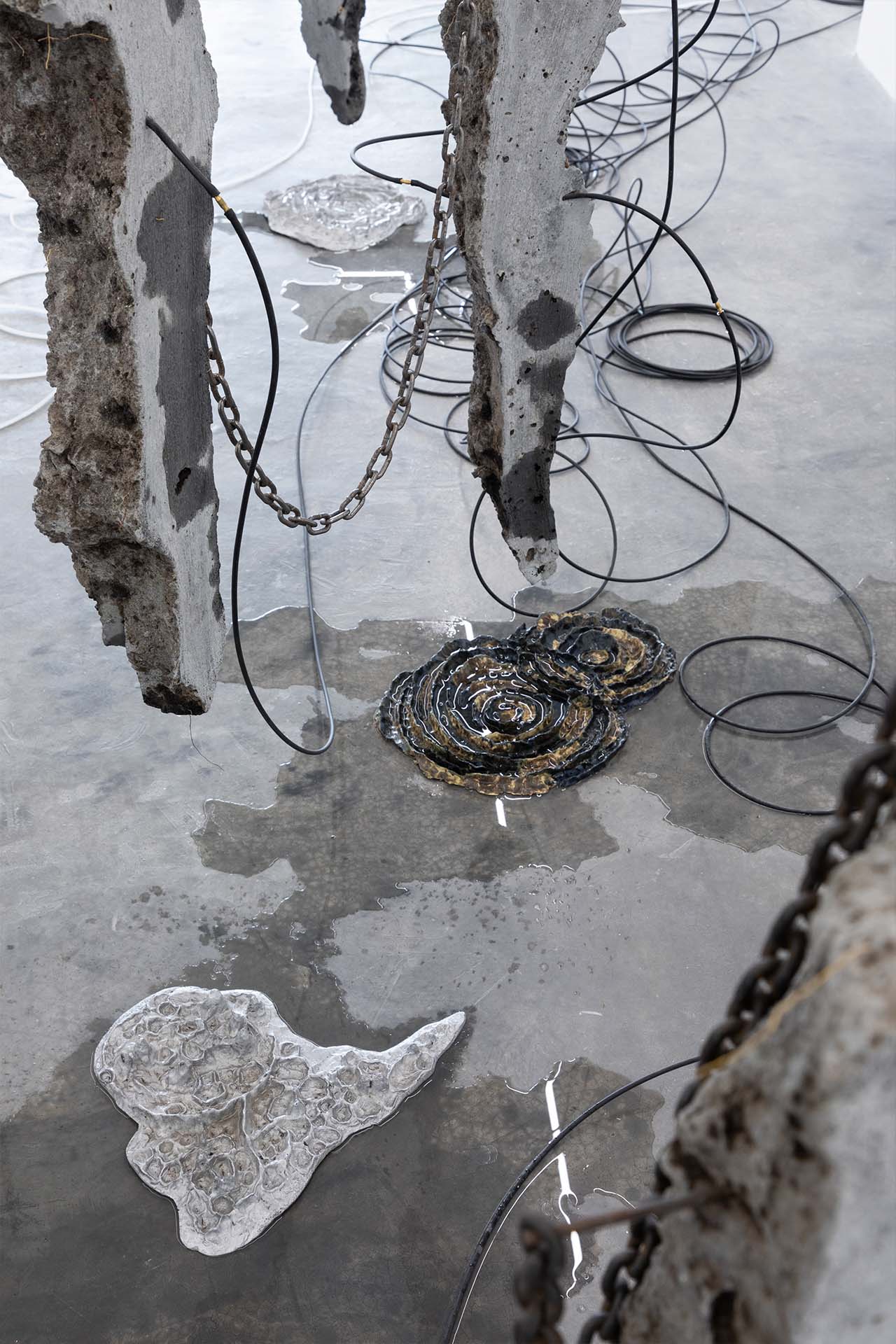
On the Work of Tomás Díaz Cedeño
In a constant affirmation of the complexities traversing the idea of landscape, functioning as a concrete sign but also as an artistic detonator, the works of Tomás Díaz Cedeño participate in various formal negotiations that seek to make explicit the forces affecting bodies, those occupying space, as well as those that transform it.
His processes involve an attentive gaze, focused on personal memories and on the study of particular territories. The landscapes of Michoacán (the area where the artist grew up) resonate throughout his sensibility, even if they are not what he chooses to thematize. Making use of his intuition, he projects assemblages and sculptural objects, meticulously exploring their possible material translations without losing sight of how they modify the initial projection. He is interested in recognizing the environment that surrounds him without locating it in a datable present, emphasizing a spatial awareness, derived from his training as an architect.
A first approach to several of his sculptures (Strap On or Se hizo un pequeño hoyo en la tierra con las manos [A Small Hole Was Made with His Hands], for example) could very well reflect a certain rawness, a rough appearance. Soon evident are a series of gestures and decisions, hinting at each piece’s subtle configuration, exalting the presence of each of the materials, and giving them a new expressive power. And it’s just that the meeting of such materials does not respond to a logic of accumulation and does not depend on the contrast between them. With intriguing discretion, these volumes seem to have an autonomous function, or indeed to house some kind of contained energy, one that could be deployed in unknown circumstances.
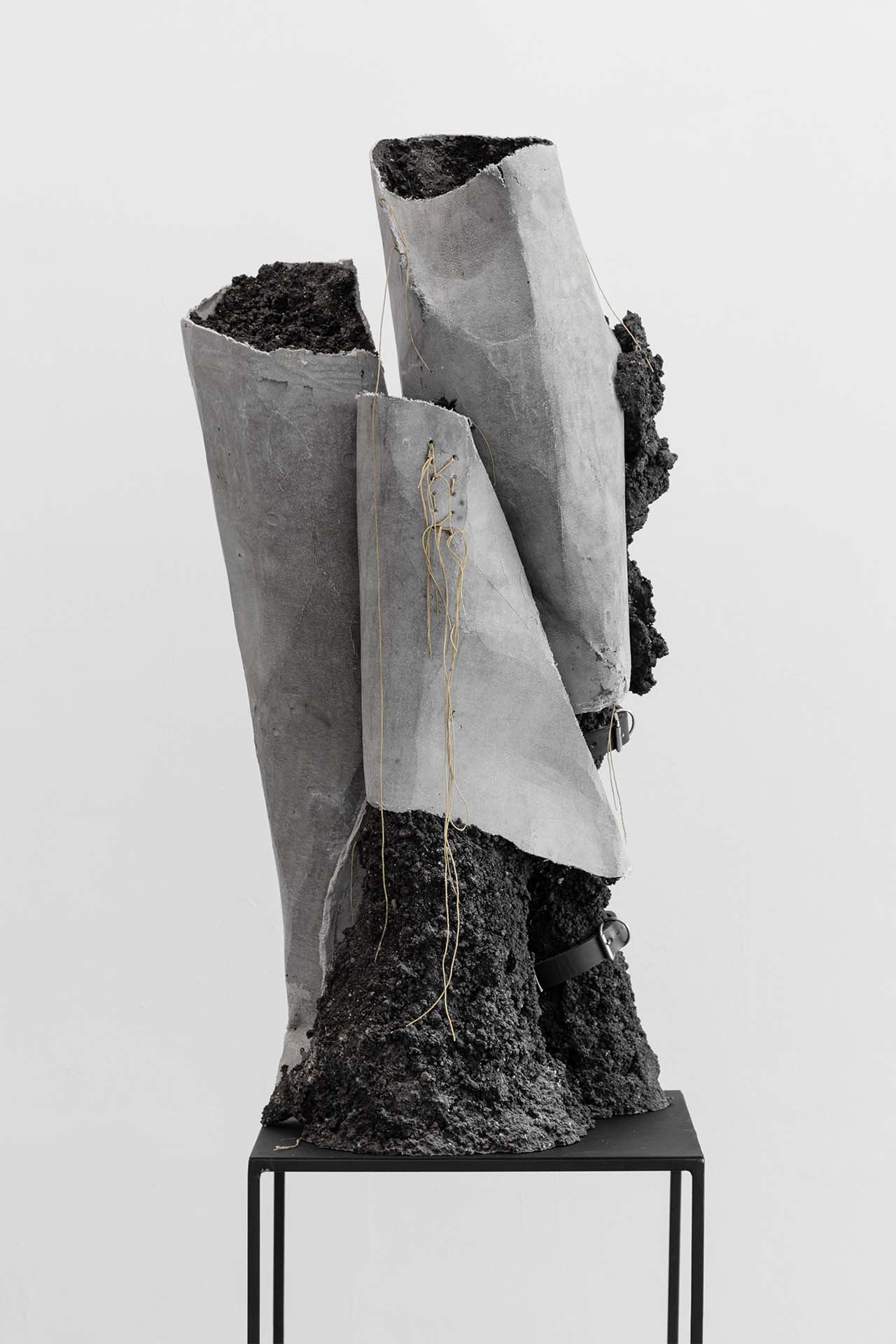
The singularity of this artist’s work calls for the joint effort of sight and touch. Through simultaneously organic and technological processes, eye and hand assimilate one another; to insist on their separation is unproductive. In Hay un fantasma (There Is a Ghost), as well as in Bosque (Forest), the rigidity of the grid made up of small regular modules is interrupted—both in their structure and in their surface—by a series of drawings that are at the same time reliefs. In Cruzando los dedos, even small sections of knotted red ribbon add a new ritual pattern, in addition to intervening in the uniformity of color. The narrative load contained in the clay, which contemplates its extraction and the manual labor of modeling, is redirected via speculation and draws what could be a free sketch of elements of nature, or a diagrammed synthesis of an environmental principle. As the interpretative gap wides, we move away from those spatio-temporalities that are familiar to us.
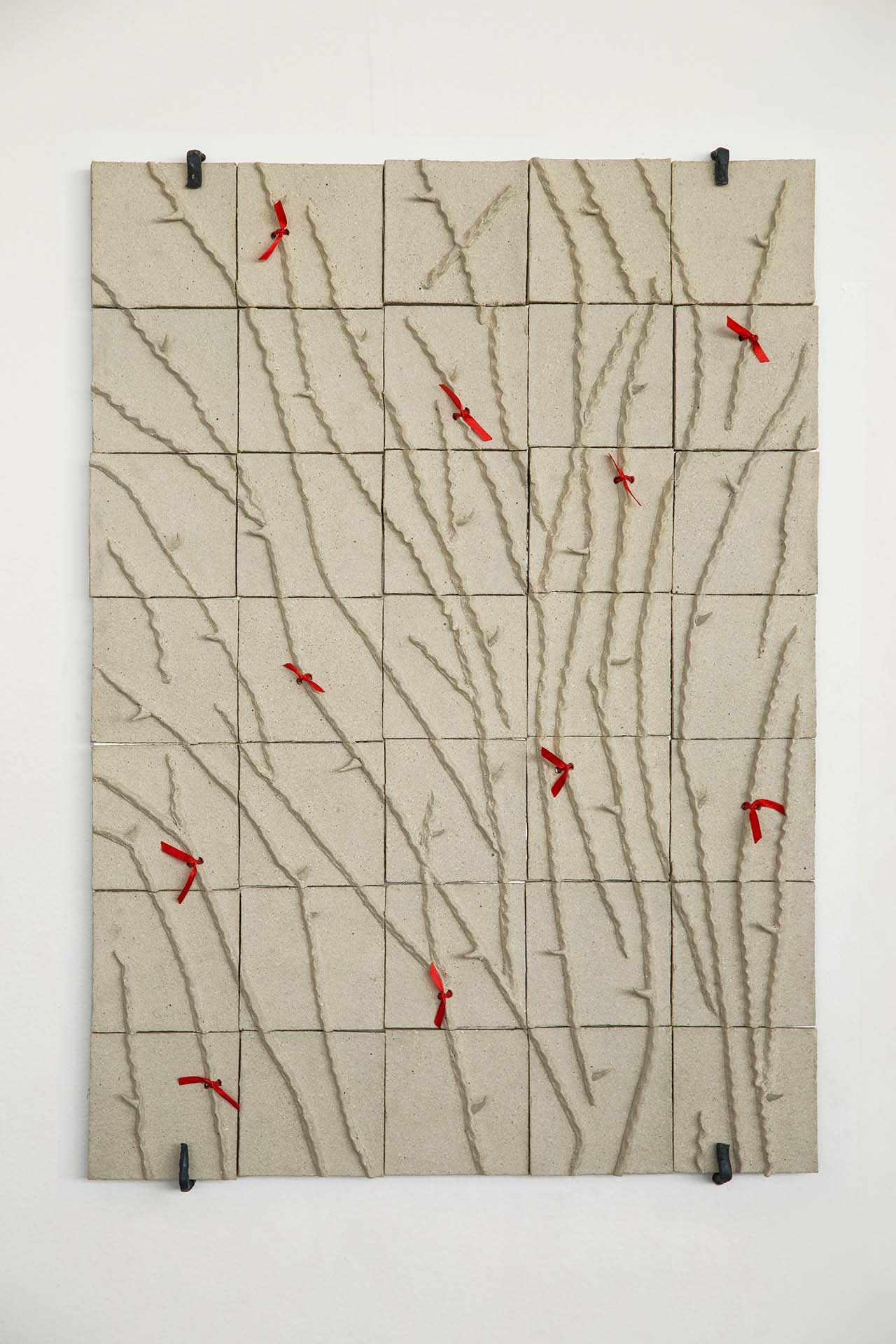
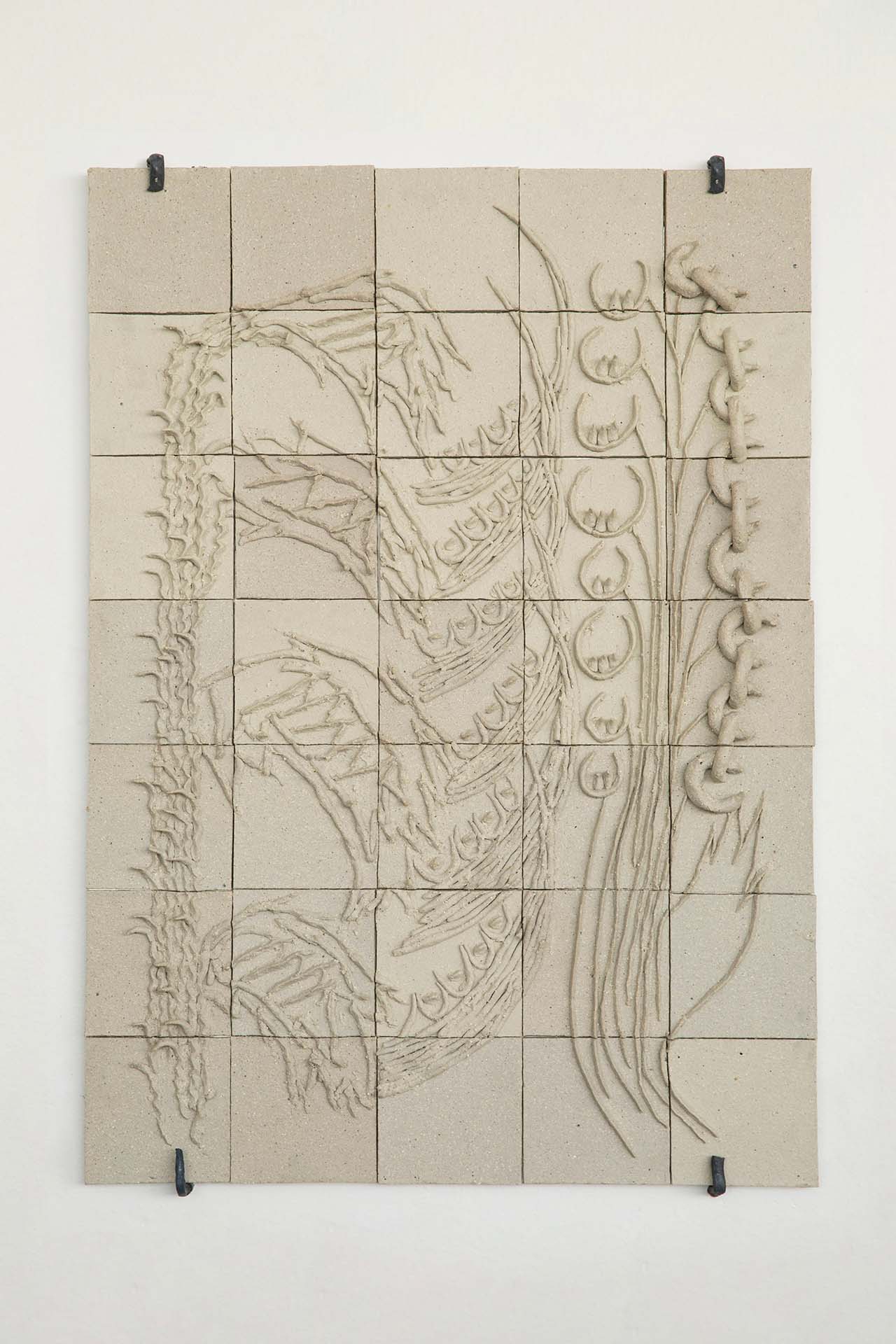
What is curious and remarkable is the presence of water in Díaz Cedeño’s practice, as he belongs to a long genealogy of artists who have worked on the vital liquid’s multiple performances with a basis in all kinds of approaches and frames of thought. Enabling substance of life, matter of flux, softener of solids, metaphor of time…the list is long. In 1000 años (1000 Years), minimal water currents are integrated into a system of suspended mineral sculptures, thus moistening them and producing dripping. This resource invokes a geological time that is difficult to know, suggesting a systematicity that has already dispensed with the human.
It can be noted that the artist still has several explorations to carry out. His work frequently approaches a remote dimension in which a veiled spirituality operates, in which the narrative and spatio-temporal possibilities are constantly updated. The different readings of the exhibition spaces serve Díaz Cedeño in modulating his formats, thinking not only about the frontality of his views but also about the creation of specific atmospheres. Although the idea of expanded sculpture can offer a starting point in approaching his practice, it is in questions around the body, its agency, and its possibilities in situated spaces that we might map the work’s dimensions, and—in the best cases—dislodge our habitual perception.
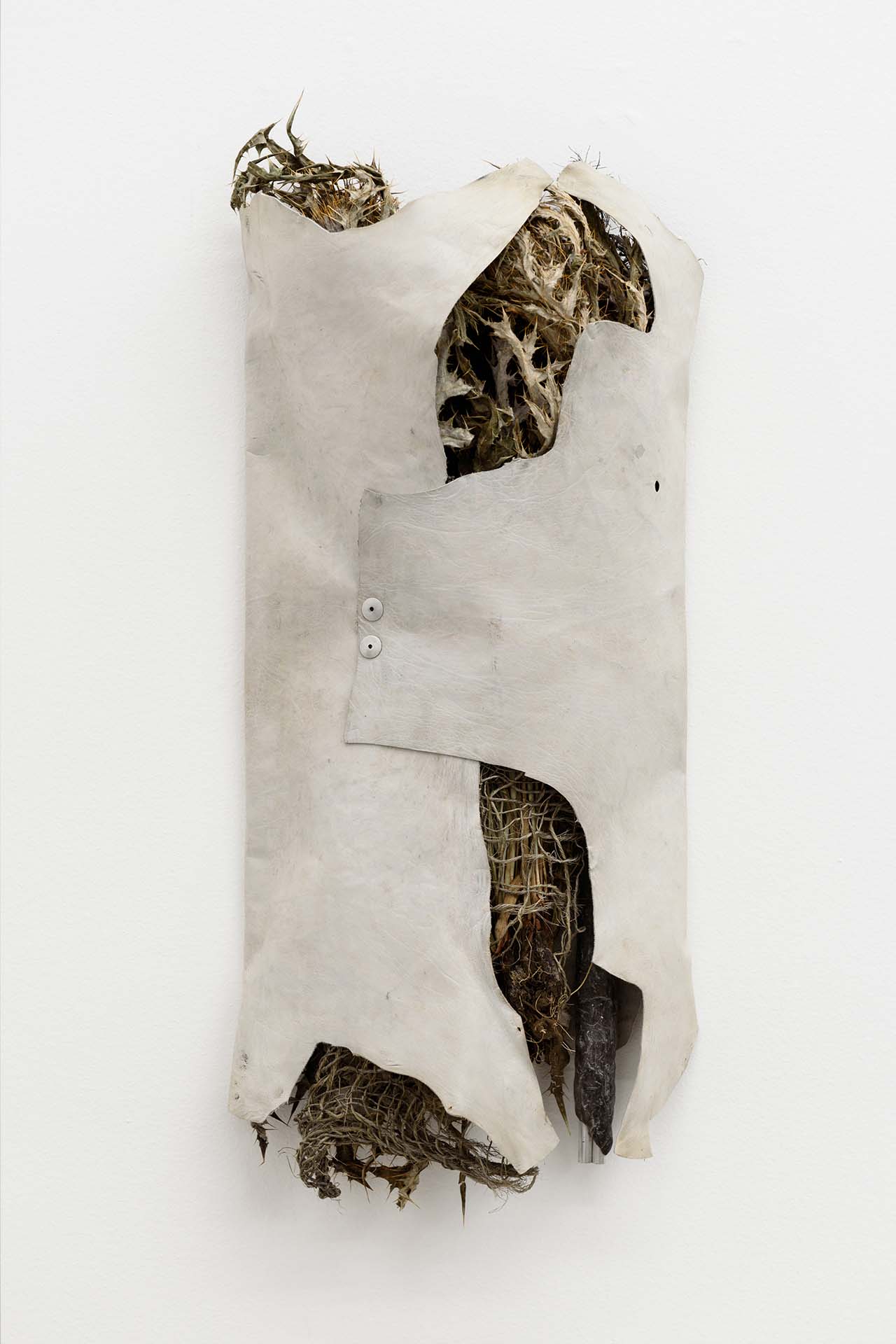
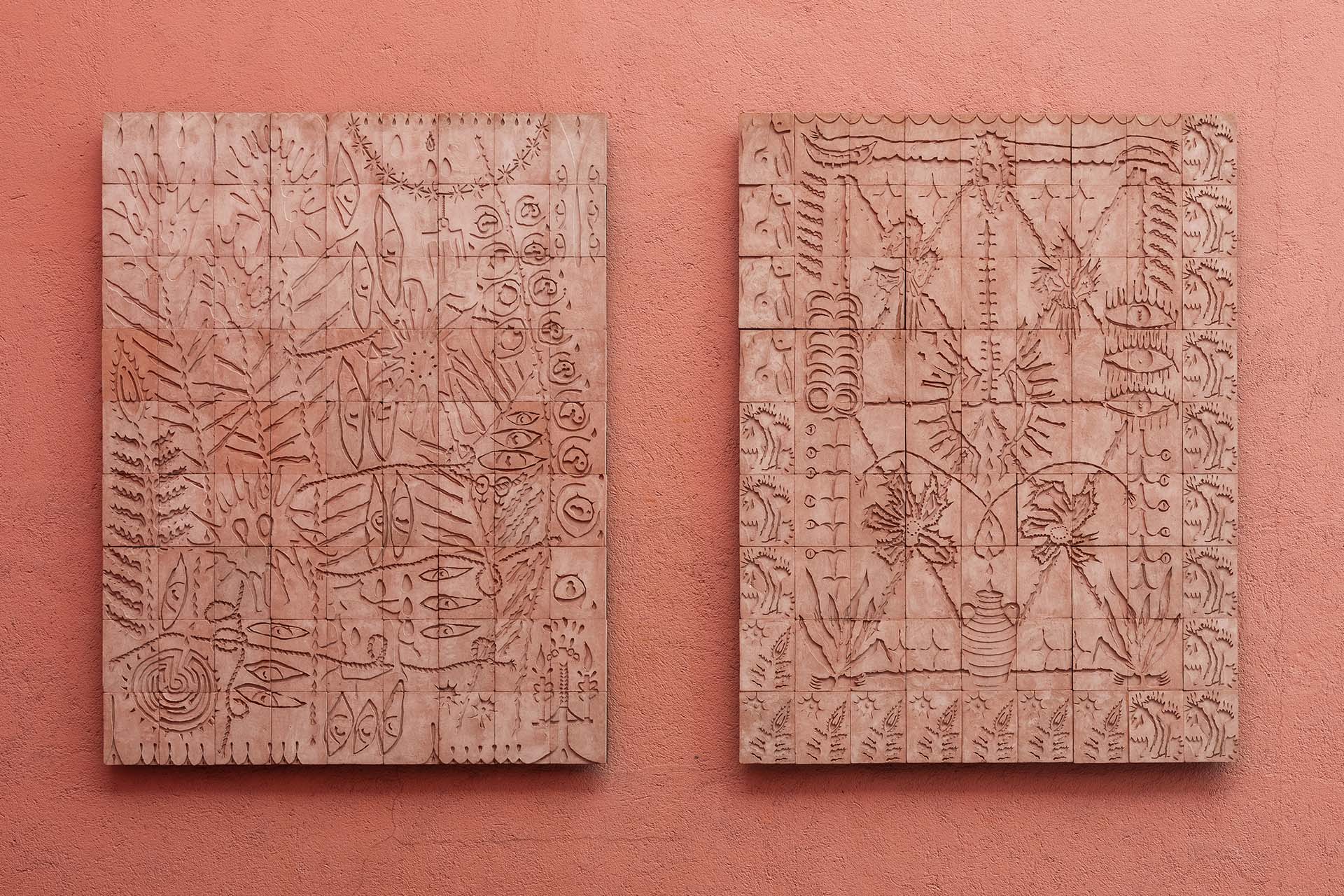
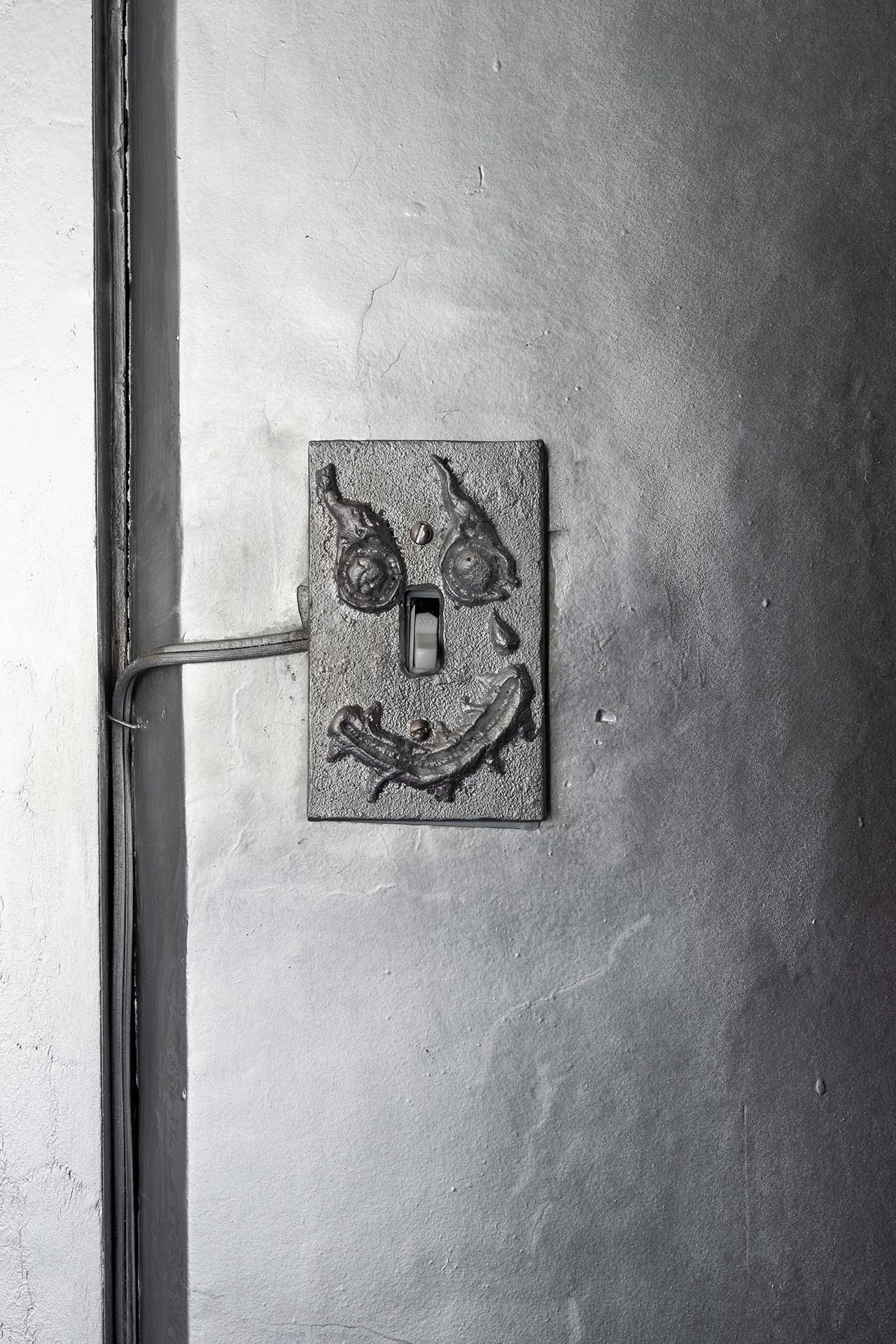
Tomás Díaz Cedeño is a Mexico City-based artist whose artistic production explores the proportion between the natural and the artificial, as well as the continuous interaction between empirical belief systems and scientific methodologies. His practice examines the expressive range material objects can embody when forced into previously unknown relationships. His physically evocative formal explorations connote an inherent mysticism, recalling alternative representation of the body, nature’s organic structures, and amulets of peripheral systems of beliefs. He examines these relations through a delicate, tenuous—even grotesque—visual language that is rooted in a committed, intimate dialogue with the materials he uses.
Bruno Enciso is a Mexican curator, writer, and cultural manager. He has collaborated with artists such as, Leonora Serra, Ana Segovia, TRES, Celeste, Kevin Cuevas and Allan Villavicencio. Since 2017, he’s member of Zona de Desgaste, an independent art space focused in the continuous formation on matters of philosophy and contemporary aesthetics. His writings have been published by Terremoto, ONDAmx and WARP. Currently, he lives and works between Hidalgo and CDMX.
